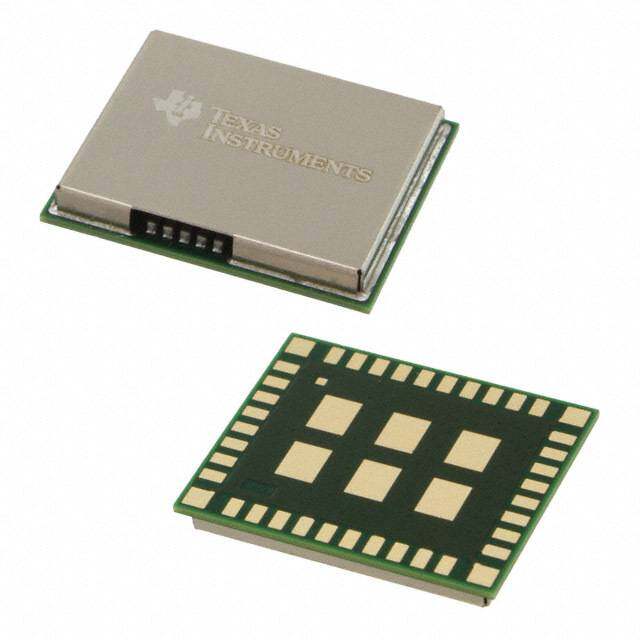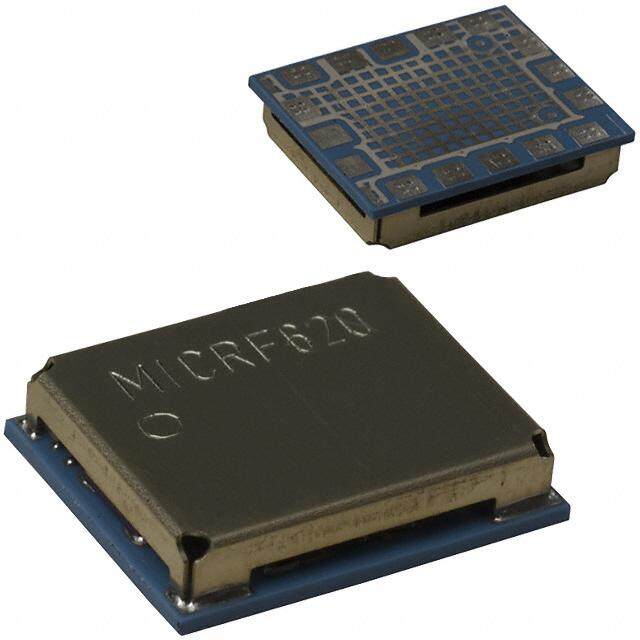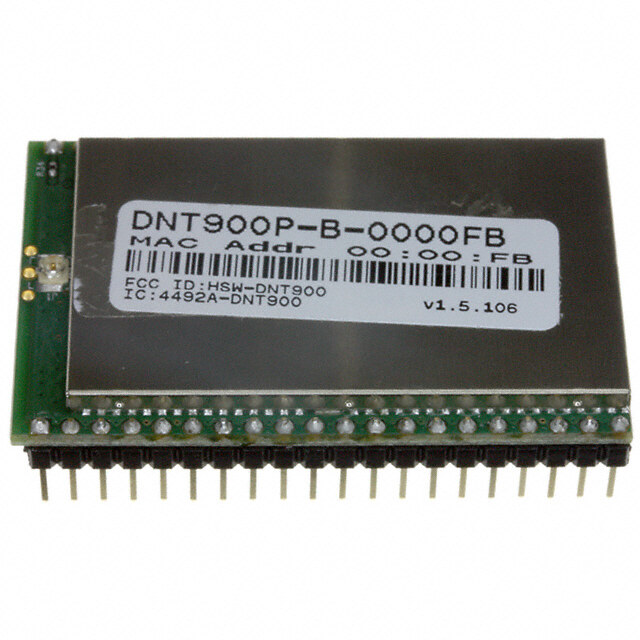ICGOO在线商城 > 射频/IF 和 RFID > RF 收发器模块 > ATZB-900-B0R
- 型号: ATZB-900-B0R
- 制造商: Atmel
- 库位|库存: xxxx|xxxx
- 要求:
| 数量阶梯 | 香港交货 | 国内含税 |
| +xxxx | $xxxx | ¥xxxx |
查看当月历史价格
查看今年历史价格
ATZB-900-B0R产品简介:
ICGOO电子元器件商城为您提供ATZB-900-B0R由Atmel设计生产,在icgoo商城现货销售,并且可以通过原厂、代理商等渠道进行代购。 ATZB-900-B0R价格参考。AtmelATZB-900-B0R封装/规格:RF 收发器模块, 802.15.4 Zigbee® Transceiver Module 783MHz, 868MHz, 915MHz Antenna Not Included,RP-SMA 表面贴装。您可以下载ATZB-900-B0R参考资料、Datasheet数据手册功能说明书,资料中有ATZB-900-B0R 详细功能的应用电路图电压和使用方法及教程。
| 参数 | 数值 |
| 产品目录 | |
| 描述 | MOD 802.15.4/ZIGB 900MHZ RF OUTZigbee/802.15.4模块 ZigBit 900 Balanced Output |
| 产品分类 | RF 收发器射频/无线模块 |
| 品牌 | Atmel |
| 产品手册 | |
| 产品图片 |
|
| rohs | 符合RoHS无铅 / 符合限制有害物质指令(RoHS)规范要求 |
| 产品系列 | Zigbee/802.15.4模块,Atmel ATZB-900-B0R- |
| mouser_ship_limit | 该产品可能需要其他文件才能进口到中国。 |
| 数据手册 | |
| 产品型号 | ATZB-900-B0R |
| PCN过时产品 | |
| 产品种类 | Zigbee/802.15.4模块 |
| 传输供电电流 | 20 mA |
| 其它名称 | ATZB-900-B0RDKR |
| 功率-输出 | 11dBm |
| 包装 | Digi-Reel® |
| 商标 | Atmel |
| 天线连接器 | PCB,表面贴装 |
| 天线连接器类型 | RPSMA |
| 存储容量 | 128kB 闪存,8kB RAM,4kB EEPROM |
| 封装 | Reel |
| 封装/外壳 | PCB 模块 |
| 尺寸 | 18.8 mm x 13.5 mm x 2 mm |
| 工作温度 | -40°C ~ 85°C |
| 工作电源电压 | 1.8 V to 3.6 V |
| 工厂包装数量 | 200 |
| 应用 | 住宅/楼宇自动化,工业控制和监控 |
| 接口类型 | 1-Wire, I2C, SPI, UART, USART |
| 接收供电电流 | 15 mA |
| 数据接口 | PCB,表面贴装 |
| 数据速率 | 20 kbps, 40 kbps, 100 kbps, 250 kbps |
| 数据速率(最大值) | 250kbps |
| 最大工作温度 | + 70 C |
| 最小工作温度 | - 20 C |
| 标准包装 | 1 |
| 灵敏度 | - 110 dBm |
| 电压-电源 | 1.8 V ~ 3.6 V |
| 电流-传输 | 20mA |
| 电流-接收 | 15mA |
| 视线范围 | 4 miles |
| 调制或协议 | 802.15.4 Zigbee |
| 调制技术 | OQPSK, BPSK |
| 输出功率 | 11 dBm |
| 频带 | 784 MHz, 868 MHz, 915 MHz |
| 频率 | 779MHz ~ 787MHz,868MHz ~ 868.6MHz,902MHz ~ 928MHz |


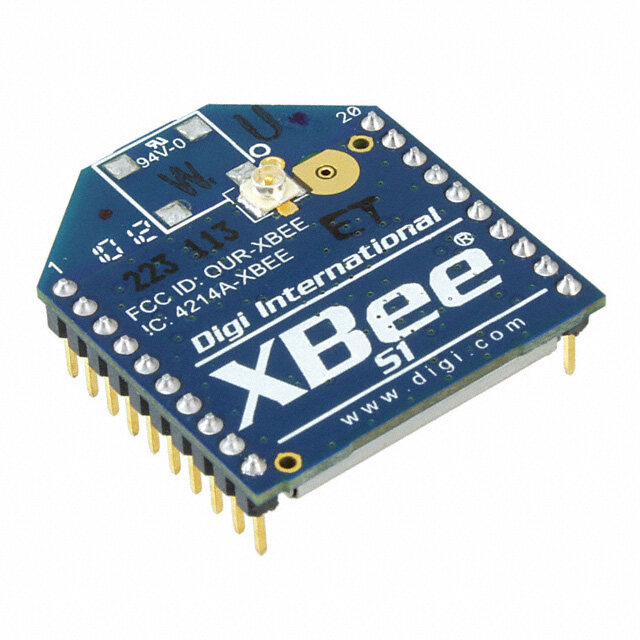
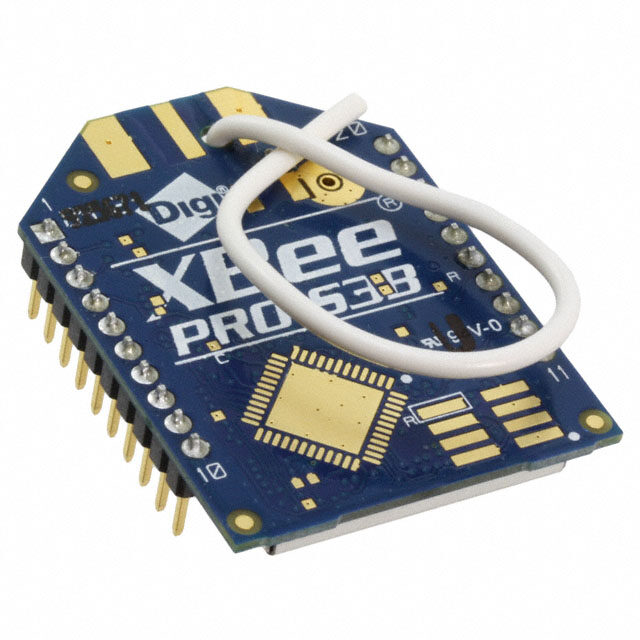
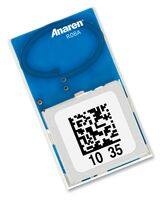

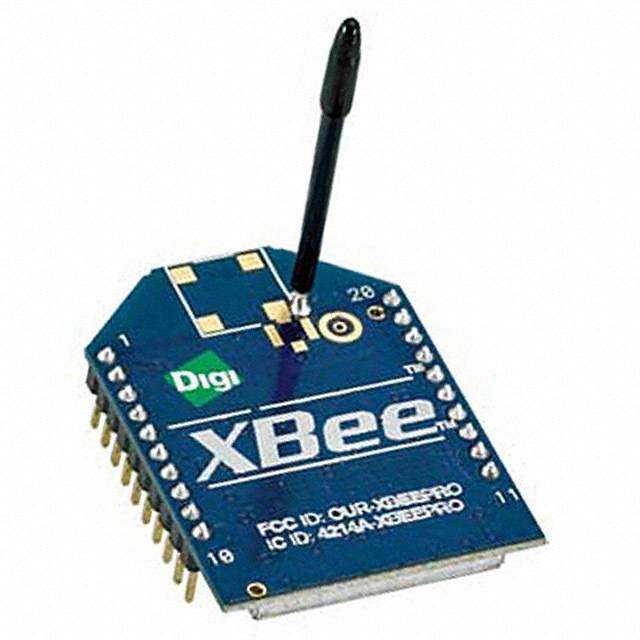
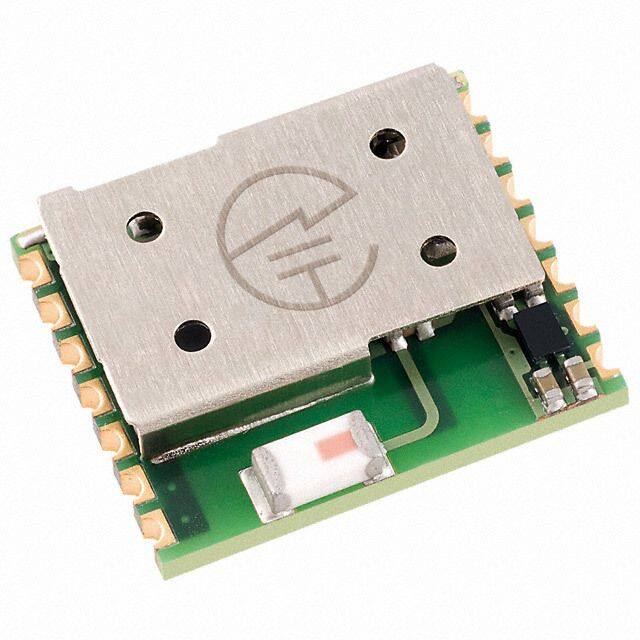


- 商务部:美国ITC正式对集成电路等产品启动337调查
- 曝三星4nm工艺存在良率问题 高通将骁龙8 Gen1或转产台积电
- 太阳诱电将投资9.5亿元在常州建新厂生产MLCC 预计2023年完工
- 英特尔发布欧洲新工厂建设计划 深化IDM 2.0 战略
- 台积电先进制程称霸业界 有大客户加持明年业绩稳了
- 达到5530亿美元!SIA预计今年全球半导体销售额将创下新高
- 英特尔拟将自动驾驶子公司Mobileye上市 估值或超500亿美元
- 三星加码芯片和SET,合并消费电子和移动部门,撤换高东真等 CEO
- 三星电子宣布重大人事变动 还合并消费电子和移动部门
- 海关总署:前11个月进口集成电路产品价值2.52万亿元 增长14.8%

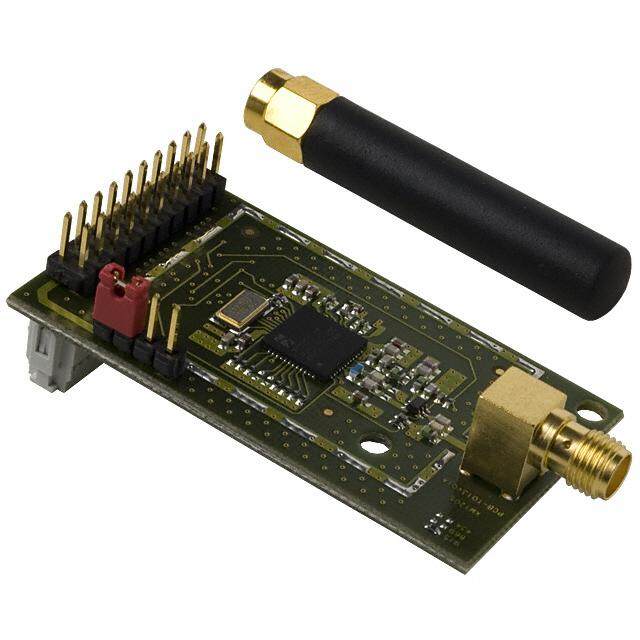
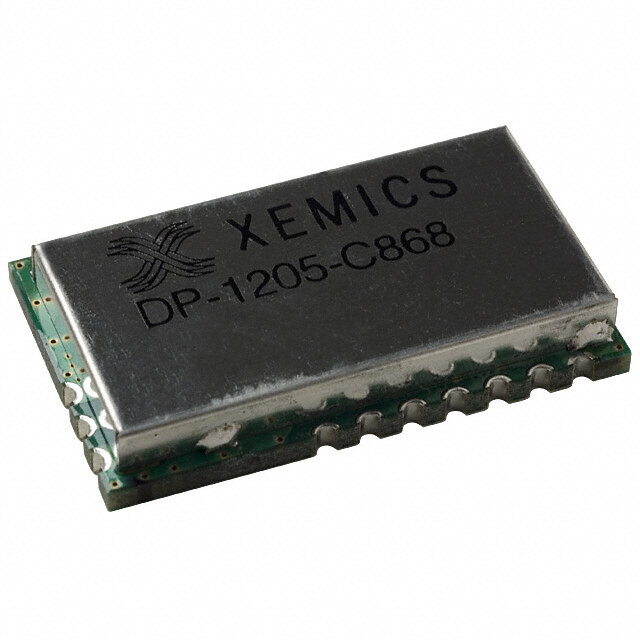

PDF Datasheet 数据手册内容提取
™ ZigBit 700/800/900 MHz Wireless Modules .................................................................................................................... ATZB-900-B0 Datasheet 8227C–MCU Wireless–06/09
ZigBit™ 700/800/900 MHz Wireless Modules 1-2 8227C–MCU Wireless–06/09
Section 1 1.1 Summary............................................................................................................................1-1 1.2 Applications........................................................................................................................1-1 1.3 Key Features......................................................................................................................1-2 1.4 Benefits..............................................................................................................................1-2 1.5 Abbreviations and Acronyms.............................................................................................1-2 1.6 Related Documents............................................................................................................1-3 Section 2 2.1 Overview............................................................................................................................2-1 Section 3 3.1 Electrical Characteristics....................................................................................................3-3 3.1.1 Absolute Maximum Ratings.................................................................................3-3 3.1.2 Test Conditions....................................................................................................3-3 3.1.3 RF Characteristics...............................................................................................3-4 3.1.4 ATmega1281V Microcontroller Characteristics...................................................3-4 3.1.5 Module Interfaces characteristics........................................................................3-5 3.2 Physical/Environmental Characteristics and Outline..........................................................3-5 3.3 Pin Configuration................................................................................................................3-6 3.4 Mounting Information.........................................................................................................3-9 3.5 Soldering Profile...............................................................................................................3-10 3.6 Antenna Reference Design..............................................................................................3-10 3.6.1 General recommendations................................................................................3-11 Section 4 4.1 Ordering Information........................................................................................................4-12 ZigBit™ 700/800/900 MHz Wireless Modules 1-i 8227C–MCU Wireless–06/09
Section 1 Introduction 1.1 Summary ZigBit™ 900 is an ultra-compact, extended range, low-power, high-sensitivity 784/868/915 MHz IEEE802.15.4/ZigBee® OEM module, based on the innovative Atmel’s mixed-signal hardware platform. It is designed for wireless sensing, control and data acquisition applications. ZigBit modules eliminate the need for costly and time-consuming RF development, and shortens time to market for a wide range of wireless applications. This module is the latest addition to the ZigBit family also represented by 2.4GHz modules ATZB-24- A2/B0[1], and ATZB-A24-UFL/U0 [3]. 1.2 Applications ZigBit 900 module is compatible with robust IEEE802.15.4/ZigBee stack that supports a self-healing, self-organizing mesh network, while optimizing network traffic and minimizing power consumption. Atmel offers two stack configurations: BitCloud and SerialNet. BitCloud is a ZigBee PRO certified software development platform supporting reliable, scalable, and secure wireless applications running on Atmel’s ZigBit modules. SerialNet allows programming of the module via serial AT-command interface. The applications include, but are not limited to: (cid:129) Building automation & monitoring – Lighting controls – Wireless smoke and CO detectors – Structural integrity monitoring (cid:129) HVAC monitoring & control (cid:129) Inventory management (cid:129) Environmental monitoring (cid:129) Security (cid:129) Water metering (cid:129) Industrial monitoring – Machinery condition and performance monitoring – Monitoring of plant system parameters such as temperature, pressure, flow, tank level, humidity, vibration, etc. (cid:129) Automated meter reading (AMR) ZigBit™ 700/800/900 MHz Wireless Modules 1-1 8227C–MCU Wireless–06/09
Introduction 1.3 Key Features (cid:129) Ultra compact size (18.8 x 13.5 mm) (cid:129) High RX sensitivity (-110 dBm) (cid:129) Outperforming link budget (120 dB) (cid:129) Up to 11 dBm output power (cid:129) Very low power consumption (< 6 µA in Sleep mode) (cid:129) Ample memory resources (128K bytes of flash memory, 8K bytes RAM, 4K bytes EEPROM) (cid:129) Wide range of interfaces (both analog and digital): – 9 spare GPIO, 2 spare IRQ lines – 4 ADC lines + 1 line for supply voltage control (up to 9 lines with JTAG disabled) – UART with CTS/RTS control – USART – I2C – SPI – 1-Wire – Up to 30 lines configurable as GPIO (cid:129) Capability to write own MAC address into the EEPROM (cid:129) Optional antenna reference designs (cid:129) IEEE 802.15.4 compliant transceiver (cid:129) 868 / 915 MHz band (cid:129) 784 MHz Chinese band (cid:129) BitCloud embedded software, including serial bootloader and AT command set 1.4 Benefits (cid:129) Over 6 km (4 miles) outdoor line-of-sight range (cid:129) Small physical footprint and low profile for optimum fit in even the smallest of devices(1) (cid:129) Extended battery life (cid:129) Mesh networking capability (cid:129) Easy-to-use low cost Evaluation Kit (cid:129) Single source of support for HW and SW Note: 1. The module is to be certified 1.5 Abbreviations and Acronyms ADC Analog-to -Digital Converter API Application Programming Interface BPSK Binary Phase-Shift Keying modulation scheme DC Direct Current DTR Data Terminal Ready EEPROM Electrically Erasable Programmable Read-Only Memory ESD Electrostatic Discharge ZigBit™ 700/800/900 MHz Wireless Modules 1-2 8227C–MCU Wireless–06/09
Introduction GPIO General Purpose Input/Output HVAC Heating, Ventilating and Air Conditioning HW Hardware I2C Inter-Integrated Circuit IEEE Institute of Electrical and Electrionics Engineers IRQ Interrupt Request ISM Industrial, Scientific and Medical radio band Digital interface for debugging of embedded device, also known as IEEE 1149.1 standard JTAG interface MAC Medium Access Control layer Microcontroller Unit. In this document it also means the processor, which is the core of ZigBit MCU module O-QPSK Offset Quadrature Phase-Shift Keying modulation scheme OEM Original Equipment Manufacturer OTA Over-The-Air upgrade PCB Printed Circuit Board PER Package Error Ratio RAM Random Access Memory RF Radio Frequency RTS/CTS Request to Send/ Clear to Send RX Receiver SMA Surface Mount Assembly SPI Serial Peripheral Interface SW Software TTM Time To Market TX Transmitter UART Universal Asynchronous Receiver/Transmitter USART Universal Synchronous/Asynchronous Receiver/Transmitter USB Universal Serial Bus ZDK ZigBit Development Kit ZigBee, Wireless networking standards targeted at low-power applications ZigBee PRO 802.15.4 The IEEE 802.15.4-2006 standard applicable to low-rate wireless Personal Area Network 1.6 Related Documents [1] ZigBit™ 2.4 GHz Wireless Modules ATZB-24-A2/B0 Datasheet. Atmel’s doc8226.pdf [2] ZigBit™ Development Kit. User Guide. MeshNetics Doc. S-ZDK-451 - TBD [3] ZigBit™ Amplified 2.4 GHz Wireless Modules datasheet. Atmel’s doc8228.pdf ZigBit™ 700/800/900 MHz Wireless Modules 1-3 8227C–MCU Wireless–06/09
Introduction [4] Atmel 8-bit AVR Microcontroller with 64K/128K/256K Bytes In-System Programmable Flash. 2549F AVR 04/06 [5] Atmel AT86RF212 Low Power 800/900 MHz Transceiver for IEEE 802.15.4b, Zigbee, and ISM Appli- cations. Preliminary specification [6] Ultra Small Surface Mount Coaxial Connectors - Low Profile 1.9mm or 2.4mm Mated Height. http://www.hirose.co.jp/cataloge_hp/e32119372.pdf [7] ZigBit 900 Development Kit. User's Guide. MeshNetics Doc. S-ZDK-451~03 TBD [8] IEEE Std 802.15.4-2006 IEEE Standard for Information technology - Part 15.4 Wireless Medium Access Control (MAC) and Physical Layer (PHY) Specifications for Low-Rate Wireless Personal Area Networks (LR-WPANs) [9] ZigBee Specification. ZigBee Document 053474r17, October 19, 2007 [10] BitCloud™ IEEE 802.15.4/ZigBee Software. AVR2050: BitCloud User Guide. Atmel’s doc8199.pdf ZigBit™ 700/800/900 MHz Wireless Modules 1-4 8227C–MCU Wireless–06/09
Section 2 Zigbit™700/800/900 MHz Wireless Modules Overview 2.1 Overview ZigBit 900 is an extended-range low-power, a low-power, high-sensitivity IEEE 802.15.4/ ZigBee-compli- ant OEM module, which occupies less than a square inch. Based on a solid combination of Atmel’s latest MCU Wireless hardware platform [5], power amplifier and low-noise amplifier, the ZigBit900 offers supe- rior radio performance, ultra-low power consumption and exceptional ease of integration. Figure 2-1. ATZB-900-B0 Block Diagram V (1.8 - 3.6V) CC IRQ UART AT86RF212 USART/SPI ATmega1281 RF RF I/O I2C JTAG Tranceiver ANALOG GPIO SPI Bus ZigBit900 contains Atmel’s ATmega1281V Microcontroller [4] and AT86RF212 RF Transceiver [5]. The module features 128 Kbytes flash memory and 8 Kbytes RAM. The ZigBit900 already contains a complete RF/MCU-related design with all the necessary passive com- ponents included. The module can be easily mounted on a simple 2-layer PCB with a minimum of required external connection. Compared to a custom RF/MCU design, a module-based solution offers considerable savings in development time and NRE cost per unit during the design, prototyping, and mass production phases of product development. To jumpstart evaluation and development, Atmel also offers a complete set of evaluation and develop- ment tools. The new ZigBit900 Development Kit [7] comes with everything you need to create custom applications featuring ZigBit900 module. The kit features MeshBean development boards (ATZB-EVB-900-SMA) with an easy-to-access exten- sion connector for attaching third party sensors and other peripherals, and a JTAG connector for easy application uploading and debugging. The kit also includes reference applications to speed up application development, source code for hard- ware interface layer and reference drivers for the all the module interfaces, intuitive development environment from Atmel, and comprehensive set of application notes and product documentation. ZigBit™ 700/800/900 MHz Wireless Modules 2-1 8227C–MCU Wireless–06/09
Zigbit™700/800/900 MHz Wireless Modules Overview ZigBit900 modules come bundled with BitCloud, a 2nd generation embedded software stack from Atmel. BitCloud is fully compliant with ZigBee PRO and ZigBee standards for wireless sensing and control [8], [9], [10] and it provides an augmented set of APIs which, while maintaining 100% compliance with the standard, offer extended functionality designed with developer's convenience and ease-of-use in mind. Depending on end-user design requirements, ZigBit900 can operate as a self-contained sensor node, where it would function as a single MCU, or it can be paired with a host processor driving the module over a serial interface. In the former case, a user application may be used with the BitCloud software allowing customization of embedded applications through BitCloud’s C API. In the latter case, the host processor controls data transmission and manages module peripherals via an extensive set of SerialNet AT commands. Thus, no firmware customization is required for a successful module design-in. Additionally, third-party sensors can be connected directly to the module, thus expanding the existing set of peripheral interfaces. ZigBit™ 700/800/900 MHz Wireless Modules 2-2 8227C–MCU Wireless–06/09
Section 3 Specifications 3.1 Electrical Characteristics 3.1.1 Absolute Maximum Ratings Table 3-1. Absolute Maximum Ratings(1)(2) Parameters Min Max Voltage on any pin, except RESET with respect to Ground -0.5V V +0.5V CC DC Current per I/O Pin 40 mA DC Current DVCC and DGND pins 300 mA Input RF Level +5 dBm Notes: 1. Absolute Maximum Ratings are the values beyond which damage to the device may occur. Under no circumstances must the absolute maximum ratings given in this table be violated. Stresses beyond those listed under "Absolute Maximum Ratings" may cause permanent damage to the device. This is a stress rating only. Functional operation of the device at these or other conditions, beyond those indicated in the operational sections of this specification, is not implied. Exposure to absolute maximum rating conditions for extended periods may affect device reliability. 2. Attention! ZigBit900 is an ESD-sensitive device. Precaution should be taken when handling the device in order to prevent permanent damage. 3.1.2 Test Conditions Table 3-2. Test conditions (unless otherwise stated), V =3V, T =25°C CC amb Parameters Condition Range Unit Supply Voltage, V 1.8 to 3.6 V CC Current Consumption: RX mode(1) 15 mA Current Consumption: TX mode(1) PTX = 5 dBm 20 mA Current Consumption: Power-save mode(1) 6 µA Note: 1. Preliminary data Current consumption actually depends on multiple factors, including but not limited to, the board design and materials, BitCloud settings, network activity, EEPROM read/write operations. It also depends on MCU load and/or peripherals used by an application. ZigBit™ 700/800/900 MHz Wireless Modules 3-3 8227C–MCU Wireless–06/09
Specifications 3.1.3 RF Characteristics Table 3-3. RF Characteristics Parameters Condition Range Unit 779 to 787 Frequency Band 868 to 868.6 MHz 902 to 928 Number of Channels 15 Channel Spacing 2 MHz Transmitter Output Power -11 to +11 dBm Receiver Sensitivity AWGN channel, PER=1% 20 kbit/s(2) -110 40 kbit/s(2) -108 PSDU length of 20 octets 100 kbit/s(2) -101 250 kbit/s(2) -100 dBm 200 kbit/s -97 400 kbit/s -90 PSDU length of 127 octets 500 kbit/s -97 1000 kbit/s -92 20 (at 868 MHz), BPSK modulation 40 (at 915 MHz) On-Air Data Rate 100 (at 868 MHz) kbps O-QPSK modulation 250 (at 915 MHz and 784 MHz) TX Output/ RX Input Nominal Impedance For balanced output 100 Ω Range, outdoors(1) For balanced output 6 km Notes: 1. Preliminary data 2. IEEE 802.15.4-2006 compliant 3.1.4 ATmega1281V Microcontroller Characteristics Table 3-4. ATmega1281V Characteristics Parameters Condition Range Unit On-chip Flash Memory size 128 Kbytes On-chip RAM size 8 Kbytes On-chip EEPROM size 4 Kbytes Operation Frequency 4 MHz ZigBit™ 700/800/900 MHz Wireless Modules 3-4 8227C–MCU Wireless–06/09
Specifications 3.1.5 Module Interfaces characteristics Table 3-5. Module Interfaces characteristics Parameters Condition Range Unit UART Maximum Baud Rate 38.4 kbps In the single ADC Resolution/ Conversion Time 10/200 Bits/µs conversion mode ADC Input Resistance >1 MΩ ADC Reference Voltage (VREF) 1.0 to V -3 V CC ADC Input Voltage 0 - VREF V I2C Maximum Clock 222 kHz GPIO Output Voltage (High/Low) -10/ 5 mA, V =3V 2.3/ 0.5 V CC Real Time Oscillator Frequency 32.768 kHz 3.2 Physical/Environmental Characteristics and Outline Parameters Value Comments Size 18.8 x 13.5 x 2.0 mm ATZB-900-B0 Operating Temperature Range -20°C to +70°C -40°C to +85°C operational(1) Operating Relative Humidity Range no more than 80% Note: 1. Minor degration of clock stability may occur. Figure 3-1. ATZB-900-B0 Mechanical drawing ZigBit™ 700/800/900 MHz Wireless Modules 3-5 8227C–MCU Wireless–06/09
Specifications 3.3 Pin Configuration Figure 3-2. ATZB-900-B0 Pinout Table 3-6. Pin descriptions Default Connector State after Pin Pin Name Description I/O Power on 1 SPI_CLK Reserved for stack operation(4) O 2 SPI_MISO Reserved for stack operation(4) I/O 3 SPI_MOSI Reserved for stack operation(4) I/O 4 GPIO0 General Purpose digital Input/Output 0(2)(3)(4)(7) I/O tri-state 5 GPIO1 General Purpose digital Input/Output 1(2)(3)(4)(7) I/O tri-state 6 GPIO2 General Purpose digital Input/Output 2(2)(3)(4)(7) I/O tri-state 7 OSC32K_OUT 32.768 kHz clock output(4)(5) O 8 RESET Reset input (active low)(4) 9,22,23 DGND Digital Ground RF clock output. When module is in active state, 4MHz signal is present on this line. While module 10 CPU_CLK O is in the sleeping state, clock generation is also stopped(4). 11 I2C_CLK I2C serial clock output(2)(3)(4)(7) O tri-state 12 I2C_DATA I2C serial clock input/output(2)(3)(4)(7) I/O tri-state 13 UART_TXD UART transmit output(1)(2)(3)(4)(7) O tri-state 14 UART_RXD UART receive input(1)(2)(3)(4)(7) I tri-state RTS input (Request To send) for UART hardware 15 UART_RTS I tri-state flow control. Active low(2)(3)(4)(7) ZigBit™ 700/800/900 MHz Wireless Modules 3-6 8227C–MCU Wireless–06/09
Specifications Table 3-6. Pin descriptions (Continued) Default Connector State after Pin Pin Name Description I/O Power on CTS output (Clear To send) for UART hardware 16 UART_CTS O tri-state flow control. Active low(2)(3)(4)(7) 17 GPIO6 General Purpose digital Input/Output 6(2)(3)(4)(7) I/O tri-state 18 GPIO7 General Purpose digital Input/Output 7(2)(3)(4)(7) I/O tri-state 19 GPIO3 General Purpose digital Input/Output 3(2)(3)(4)(7) I/O tri-state 20 GPIO4 General Purpose digital Input/Output 4(2)(3)(4)(7) I/O tri-state 21 GPIO5 General Purpose digital Input/Output 5(2)(3)(4)(7) I/O tri-state 24,25 D_VCC Digital Supply Voltage (V )(9) CC 26 JTAG_TMS JTAG Test Mode Select(2)(3)(4)(6) I 27 JTAG_TDI JTAG Test Data Input(2)(3)(4)(6) I 28 JTAG_TDO JTAG Test Data Output(2)(3)(4)(6) O 29 JTAG_TCK JTAG Test Clock(2)(3)(4)(6) I 30 ADC_INPUT_3 ADC Input Channel 3(2)(3)(7) I tri-state 31 ADC_INPUT_2 ADC Input Channel 2(2)(3)(7) I tri-state 32 ADC_INPUT_1 ADC Input Channel 1(2)(3)(7) I tri-state ADC Input Channel 0, used for battery level 33 BAT I tri-state measurement. This pin equals V /3.(2)(3)(7) CC 34 A_VREF Input/Output reference voltage for ADC I/O tri-state 35 AGND Analog ground 36 GPIO_1WR 1-wire interface(2)(3)(4)(7) I/O DTR input (Data Terminal Ready) for UART. 37 UART_DTR I tri-state Active low(2)(3)(4)(7) 38 USART0_RXD USART/SPI Receive pin(2)(3)(4)(7) I tri-state 39 USART0_TXD USART /SPI Transmit pin(2)(3)(4)(7) O tri-state 40 USART0_EXTCLK USART/SPI External Clock(2)(3)(4)(7) I/O tri-state 41 GPIO8 General Purpose Digital Input/Output 8(2)(3)(4)(7) I/O tri-state 42 IRQ_7 Digital Input Interrupt request 7(2)(3)(4)(7) I tri-state 43 IRQ_6 Digital Input Interrupt request 6(2)(3)(4)(7) I tri-state 44,46,48 RF GND RF Analog Ground 45 RFP_IO Differential RF Input/Output I/O 47 RFN_IO Differential RF Input/Output I/O Notes: 1. The UART_TXD pin is intended for input (i.e. its designation as "TXD" implies some complex system containing ZigBit900 as its RF terminal unit), while UART_RXD pin, vice versa, is for output. 2. Most of pins can be configured for general purpose I/O or for some alternate functions as described in details in the ATmega1281V Datasheet [1]. 3. GPIO pins can be programmed either for output, or for input with/without pull-up resistors. Output pin drivers are strong enough to drive LED displays directly (refer to figures on pages 387-388, [1]). 4. All digital pins are provided with protection diodes to D_VCC and DGND ZigBit™ 700/800/900 MHz Wireless Modules 3-7 8227C–MCU Wireless–06/09
Specifications 5. It is strongly recommended to avoid assigning an alternate function for OSC32K_OUT pin because it is used by BitCloud. However, this signal can be used if another peripheral or host processor requires 32.768 kHz clock, otherwise this pin can be disconnected. 6. Normally, JTAG_TMS, JTAG_TDI, JTAG_TDO, JTAG_TCK pins are used for on-chip debugging and flash burning. They can be used for A/D conversion if JTAGEN fuse is disabled. 7. The following pins can be configured with the BitCloud software to be general-purpose I/O lines: GPIO0, GPIO1, GPIO2, GPIO3, GPIO4, GPIO5, GPIO6, GPIO7, GPIO8, GPIO_1WR, I2C_CLK, I2C_DATA, UART_TXD, UART_RXD, UART_RTS, UART_CTS, ADC_INPUT_3, ADC_INPUT_2, ADC_INPUT_1, BAT, UART_DTR, USART0_RXD, USART0_TXD, USART0_EXTCLK, IRQ_7, IRQ_6. Additionally, four JTAG lines can be programmed with software as GPIO as well, but this requires changing the fuse bits and will disable JTAG debugging. 8. With BitCloud, CTS pin can be configured to indicate sleep/active condition of the module thus provid- ing mechanism for power management of host processor. If this function is necessary, connection of this pin to external pull-down resistor is recommended to prevent the undesirable transients during module reset process. 9. Using ferrite bead and 1 µF capacitor located closely to the power supply pin is recommended, as shown below. 10.In SPI mode, USART0_EXTCLK is output. In USART mode, this pin can be configured as either input or output pin. ZigBit™ 700/800/900 MHz Wireless Modules 3-8 8227C–MCU Wireless–06/09
Specifications Figure 3-3. Typical Reference Schematic 1 26 5 SPI_CLK JTAG_TMS JTAG_TMS 2 27 9 SPI_MISO JTAG_TDI JTAG_TDI 3 SPI_MOSI JTAG_TDO 28 3 JTAG_TDO 4 GPIO0 JTAG_TCK 29 1 JTAG_TCK 5 GPIO1 ADC_INPUT_3 30 VCC 4 JTAG_VCC 6 GPIO2 ADC_INPUT_2 31 7 NC 7 32 100k 8 OSC32K_OUT ADC_INPUT_1 NC 8 33 6 RST RESET BAT JTAG_RST 9 34 2 DGND A_VREF JTAG_GND 10 35 10 CPU_CLK AGND JTAG_GND 11 36 I2C_CLK GPIO9 Host MCU 12 37 I2C_DATA UART_DTR UART_TXD 13 UART_TXD USART0_RXD 38 UART_RXD 14 UART_RXD USART0_TXD 39 UART_RTS 15 UART_RTS USART0_EXTCLK 40 UART_CTS 16 UART_CTS GPIO8 41 17 42 GPIO6 IRQ_7 18 43 GPIO7 IRQ_6 19 GPIO3 RF_GND 44 0900BBaLl1u8nB100 20 GPIO4 RFP_IO 45 6 3 21 GPIO5 RF_GND 46 two capacitors* 5 2 22 DGND RFN_IO 47 4 1 23 DGND RF_GND 48 VCC 24 D_VCC 1,8..3,6V 1uF 25 D_VCC *) 68 pF GRM 1555C1H101JZ01D 3.4 Mounting Information The below diagrams show the PCB layout recommended for ZigBit900 module. Neither via-holes nor wires are allowed on the PCB upper layer in area occupied by the module. As a critical requirement, RF_GND pins should be grounded via several holes to be located right next to the pins thus minimizing inductance and preventing both mismatch and losses. ZigBit™ 700/800/900 MHz Wireless Modules 3-9 8227C–MCU Wireless–06/09
Specifications Figure 3-4. ATZB-900-B0 PCB Recommended Layout, Top View 3.5 Soldering Profile The J-STD-020C-compliant soldering profile is recommended, as given below. Table 3-7. Soldering Profile(1) Profile Feature Green Package Average ramp-up rate (217 °C to peak) 3 °C/s max. Preheat temperature 175 °C ± 25 °C 180 s max. Temperature maintained above 217 °C 60 s to 150 s Time within 5 °C of actual peak temperature 20 s to 40 s Peak temperature range 6 °C/s max. Ramp-down rate 8 minutes max. Note: 1. The package is backward compatible with Pb/Sn soldering profile 3.6 Antenna Reference Design This section presents PCB design which may be used to combine ZigBit900 with an external antenna This antenna reference designs is recommended for successful design-in. ZigBit™ 700/800/900 MHz Wireless Modules 3-10 8227C–MCU Wireless–06/09
Specifications Figure 3-5. FCC/CE compliant RF reference design with RP-SMA connector recommended for ATZB-900-B0 Multiple factors affect proper antenna match, hence, affecting the antenna pattern. The particular factors are the board material and thickness, shields, the material used for enclosure, the board neighborhood, and other components adjacent to antenna. 3.6.1 General recommendations (cid:132) Metal enclosure should not be used. Using low profile enclosure might also affect antenna tuning. (cid:132) Placing high profile components next to antenna should be avoided. (cid:132) Having holes punched around the periphery of the board eliminates parasitic radiation from the board edges also distorting antenna pattern. (cid:132) ZigBit900 module should not be placed next to the consumer electronics which might interfere with ZigBit900's RF frequency band. The board design should prevent propagation of microwave field inside the board material. Electromag- netic waves of high frequency may penetrate the board thus making the edges of the board radiate, which may distort the antenna pattern. To eliminate this effect, metalized and grounded holes must be placed around the board's edges. ZigBit™ 700/800/900 MHz Wireless Modules 3-11 8227C–MCU Wireless–06/09
Section 4 Ordering Information 4.1 Ordering Information Part Number Description ATZB-900-B0R(1) 783/868/915 MHz IEEE802.15.4/ZigBee Wireless Module w/ Balanced RF Port Note: 1. Tape and Reel quantity: 200 ZigBit™ 700/800/900 MHz Wireless Modules 4-12 8227C–MCU Wireless–06/09
Headquarters International Atmel Corporation Atmel Asia Atmel Europe Atmel Japan 2325 Orchard Parkway Unit 1-5 & 16, 19/F Le Krebs 9F, Tonetsu Shinkawa Bldg. San Jose, CA 95131 BEA Tower, Millennium City 5 8, Rue Jean-Pierre Timbaud 1-24-8 Shinkawa USA 418 Kwun Tong Road BP 309 Chuo-ku, Tokyo 104-0033 Tel: 1(408) 441-0311 Kwun Tong, Kowloon 78054 Saint-Quentin-en- Japan Fax: 1(408) 487-2600 Hong Kong YvelinesCedex Tel: (81) 3-3523-3551 Tel: (852) 2245-6100 France Fax: (81) 3-3523-7581 Fax: (852) 2722-1369 Tel: (33) 1-30-60-70-00 Fax: (33) 1-30-60-71-11 Product Contact Web Site Technical Support Sales Contact www.atmel.com avr@atmel.com www.atmel.com/contacts Literature Requests www.atmel.com/literature Disclaimer: The information in this document is provided in connection with Atmel products. No license, express or implied, by estoppel or otherwise,to any intellectualproperty right is granted by this document or in connection with the sale of Atmel products. EXCEPT AS SET FORTH IN ATMEL’S TERMS AND CONDI- TIONS OF SALE LOCATED ON ATMEL’S WEB SITE, ATMEL ASSUMES NO LIABILITY WHATSOEVER AND DISCLAIMS ANY EXPRESS, IMPLIED OR STATUTORY WARRANTY RELATING TO ITS PRODUCTS INCLUDING, BUT NOT LIMITED TO, THE IMPLIED WARRANTY OF MERCHANTABILITY, FITNESS FOR A PARTICULAR PURPOSE, OR NON-INFRINGEMENT. IN NO EVENT SHALL ATMEL BE LIABLE FOR ANY DIRECT, INDIRECT, CONSEQUENTIAL, PUNITIVE, SPECIAL OR INCIDEN- TAL DAMAGES (INCLUDING, WITHOUT LIMITATION, DAMAGES FOR LOSS OF PROFITS, BUSINESS INTERRUPTION, OR LOSS OF INFORMATION) ARISING OUT OF THE USE OR INABILITY TO USE THIS DOCUMENT, EVEN IF ATMEL HAS BEEN ADVISED OF THE POSSIBILITY OF SUCH DAMAGES. Atmel makes no representationsor warranties with respect to the accuracy or completeness of the contents of this document and reserves the right to make changes to specifications and product descriptions at any time without notice. Atmel does not make any commitment to update the information contained herein. Unless specifically provided otherwise, Atmel products are not suitable for, and shall not be used in, automotive applications. Atmel’s products are not intended, authorized, or warranted for use as components in applications intended to support or sustainlife. © 2009 Atmel Corporation. All rights reserved. Atmel®, Atmel logo and combinations thereof, and others are registered trademarks or trade- marks of Atmel Corporation or its subsidiaries. Other terms and product names may be trademarks of others. 8227C–MCU Wireless–06/09
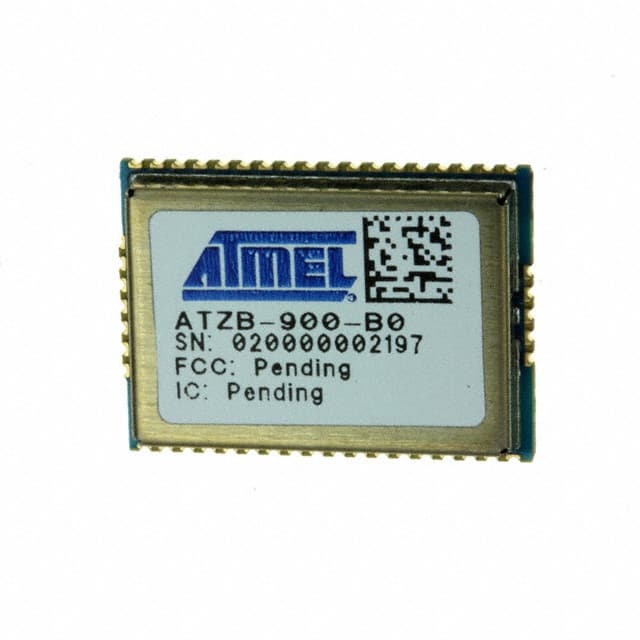
 Datasheet下载
Datasheet下载

